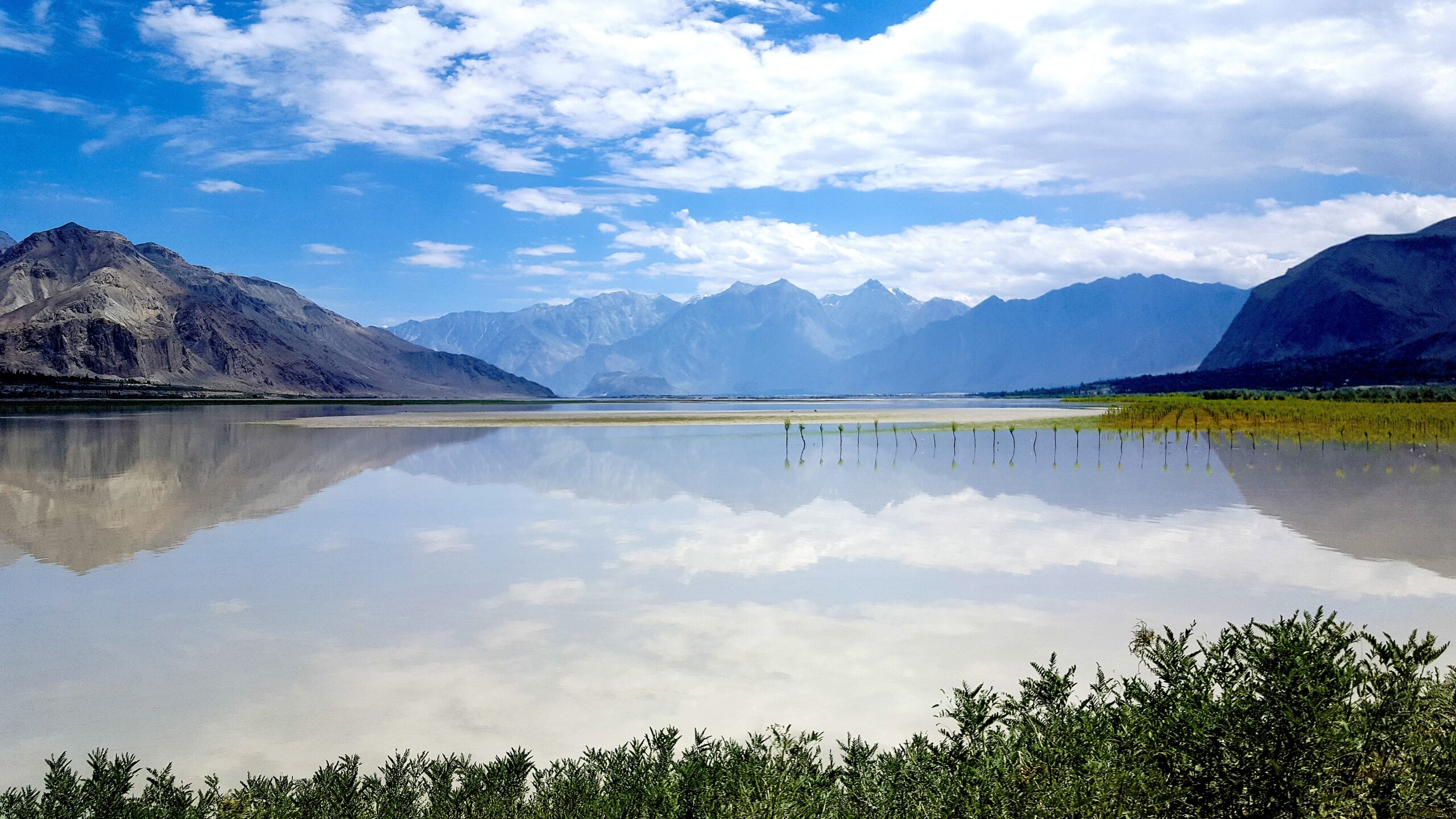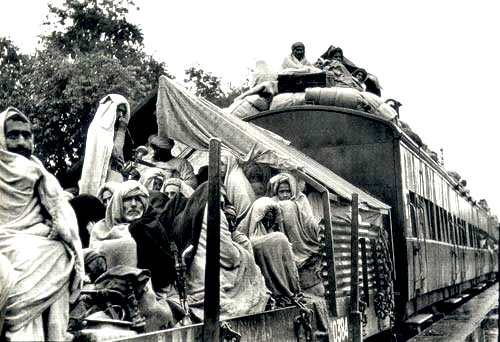In the latest tensions between India and Pakistan the reverberations of the British Empire can be seen extending their evil over generations.

India’s Prime Minister, Narendra Modi, viewing the Himalayas in March. (Prime Minister’s Office/ Government of India/ Wikimedia Commons/ GODL-India)
By Craig Murray
CraigMurray.org.uk
 India’s Hindutva president, Narendra Modi, has used the Kashmir terrorism incident to abrogate the 1960s Indus Waters Treaty — a longstanding goal of Modi. The Indian version of the “terrorist attack,” most of whose victims were Muslim, has largely been accepted by Western governments without evidence.
India’s Hindutva president, Narendra Modi, has used the Kashmir terrorism incident to abrogate the 1960s Indus Waters Treaty — a longstanding goal of Modi. The Indian version of the “terrorist attack,” most of whose victims were Muslim, has largely been accepted by Western governments without evidence.
False flags abound nowadays. You may recall that we were told that the most deadly rocket ever fired by Hamas killed only Palestinians in a hospital compound, while the most deadly rocket ever fired by Hezbollah killed only Druze children. I have at present an open mind about what occurred in Kashmir.
It is however certain that tearing up the Indus Waters Treaty is a long term Modi goal. The Indus River supplies 80 percent of Pakistan’s agricultural water and the supply is already insufficient, with disastrous salination of the lower reaches of the river as the sea creeps into the areas once occupied by the mighty flow. I visited the area of lower Sindh five years ago and witnessed the fields encrusted with white salt.
India controls the upstream flow into Pakistan of approximately 70 percent of the total water of the Indus, about 55 percent of all of Pakistan’s agricultural water.
In September 2016 in response to earlier violence in Kashmir, Modi initiated his slogan “Blood and water cannot flow together” and threatened to cut the Indus supply.
He increased India’s out-take from the Ravi, Beas and Sutlej tributaries and restarted the Tulbul canal project. In both 2019 and 2022 while campaigning in Haryana, Modi made strong speeches threatening to cut off the water “wasted on Pakistan.”
In 2023 Modi issued formal notice to Pakistan of India’s desire to renegotiate the Indus Waters Treaty and repeated this in 2024 when Pakistan did not respond. On both occasions India cited “counter-terrorism” as one of three reasons for review (the others being environmental protection and hydro-electric generation).
As counter-terrorism can scarcely be linked to agricultural water allocation, this illustrates Modi’s grandstanding approach.

Indus River in Skardu, Pakistan, July 2017. (Saad Ali / Wikimedia Commons / CC BY-SA 4.0)
Modi does not have the physical power to stop the Indus, but does have the ability short-term to divert more of the river to Indian irrigation and storage, sufficient to cause some immediate distress in Pakistan.
Indian media are already thrilled with the idea. But long term major rebalancing of the river water allocation would require substantive new infrastructure in India. Such projects however would be both economically viable and likely wildly popular with Modi’s Hindutva base both for promoting Indian development and for damaging Pakistan.
In 2019, Modi revoked Article 270 of the Indian Constitution which gave special autonomous status to Jammu and Kashmir, incorporating them into India proper. He did this despite the Constitution stating it could only be done with the support of the “Constituent Assembly of the State.”
That body no longer existed, having been replaced by a “Legislative Assembly.” Modi used another constitutional provision to replace “Constituent Assembly” with “Legislative Assembly,” which seems fair enough.
But having suspended the Legislative Assembly, he then claimed that its powers were now vested in the governor, a Modi appointee.
Modi then agreed with himself to remove the autonomy of Indian Kashmir — a move that had no significant support among its 97 percent Muslim inhabitants and was accompanied by a ferocious crackdown — indeed, lockdown — and the destruction of its once thriving tourism industry.
He simultaneously repealed another provision preventing non-Kashmiris from buying property in the region. Modi himself is therefore very much the cause of heightened ethnic, political and religious tension in Kashmir.
Partition of 1947

A refugee train on its way to Punjab, Pakistan, during the partition of India, 1947. (Wikimedia Commons /Public Domain)
It is generally recognised that the situation of Kashmir, partly in India and partly in Pakistan, with a small portion in China and the Indian part occupied by deeply dissatisfied Muslims, is a result of the disastrous British partition of India in 1947.
But in fact British responsibility for the disaster of modern Kashmir goes back a hundred years further than that, to 1846.
Kashmir was part of the Durrani Afghan Empire from 1758 until 1819, when it was captured by the Sikh Empire of Maharajah Ranjit Singh. Singh was always careful to place Muslim governors over Muslim lands, including from the Durrani family itself. He allied with the British during the First Afghan War and sent troops, including Kashmiri levies, to aid the British invasion in 1839.
However after Ranjit Singh’s death and civil war over the succession, the British attacked the Sikh Empire to “restore stability.” Following the Battle of Sobraon, the British annexed the land between the Beas and Ravi rivers, while by the Treaty of Amritsar of 1846 the British sold Jammu and Kashmir to the former Sikh wazir, Gulab Singh, for 50 lakhs of rupees.
Gulab Singh was a particularly murderous character who had played an extraordinarily Machiavellian role in the Sikh court of Ranjit Singh and his immediate successors and had of course looted from the Sikh treasury the money he paid to the British. So he paid the British with stolen money for land the British had just stolen.
This is how the extraordinary situation [replete with sectarian friction] arose that the Muslim territories of Kashmir and Jammu had a Hindu ruler (Gulab Singh was a Hindu Dogra). That anomaly was the direct cause of the disastrous division of the territory by the British in the Partition 100 years later.
It is extremely frequent that today’s conflicts are caused by the actions of the British Empire reverberating down and continuing their evil over generations. It is equally frequent that it is very hard to find analyses that explain the truth behind the conflicts.
Craig Murray is an author, broadcaster and human rights activist. He was British ambassador to Uzbekistan from August 2002 to October 2004 and rector of the University of Dundee from 2007 to 2010. His coverage is entirely dependent on reader support. Subscriptions to keep this blog going are gratefully received.
Subscriptions to keep Craig Murray’s blog going are gratefully received. Because some people wish an alternative to PayPal, Murray has set up new methods of payment including a GoFundMe appeal and a Patreon account.
This article is from CraigMurray.org.uk.
Views expressed in this article may or may not reflect those of Consortium News.

You do know that “the Kahmiri ruler at the time” means the Hindu absolute monarchy the British sold Kashmir to?
It would be helpful to cite whatever evidence you might have for your assertion that: “most of the victims were Muslim.” As the post currently reads, there is no support either for your claim or that of the Indian government. At least the official (Indian) version includes names and ages of the supposed dead, their religion, along with supposed interviews of survivors. Yes, governments lie. Journalists also present falsehoods.
It might be noted that there is still an outstanding (1948) UN Resolution calling on a Plebiscite to determine the status of Kashmir. India has never permitted this to happen. A unilateral declaration on the part of India, claiming Kashmir to be Indian, is open to dispute in many places, including the UN, but not, apparently in the NYT, which today attributed Kashmir to India, no longer as even a “disputed territory.” However much I appreciated the lesson regarding the long and sordid history of British machinations in Kashmir, I would have liked to have seen Craig Murray, whom I respect very much, to have given his readers a bit more of this subsequent history.
It bears noting that the state of Pakistan has no valid claim to the Kashmir region. It thinks it should have it because of the majority religion there, but there was no historical territorial antecedent. In fact, it was Pakistan’s attempt to annex the territory that led the Kashmiri government at the time to seek to join India.